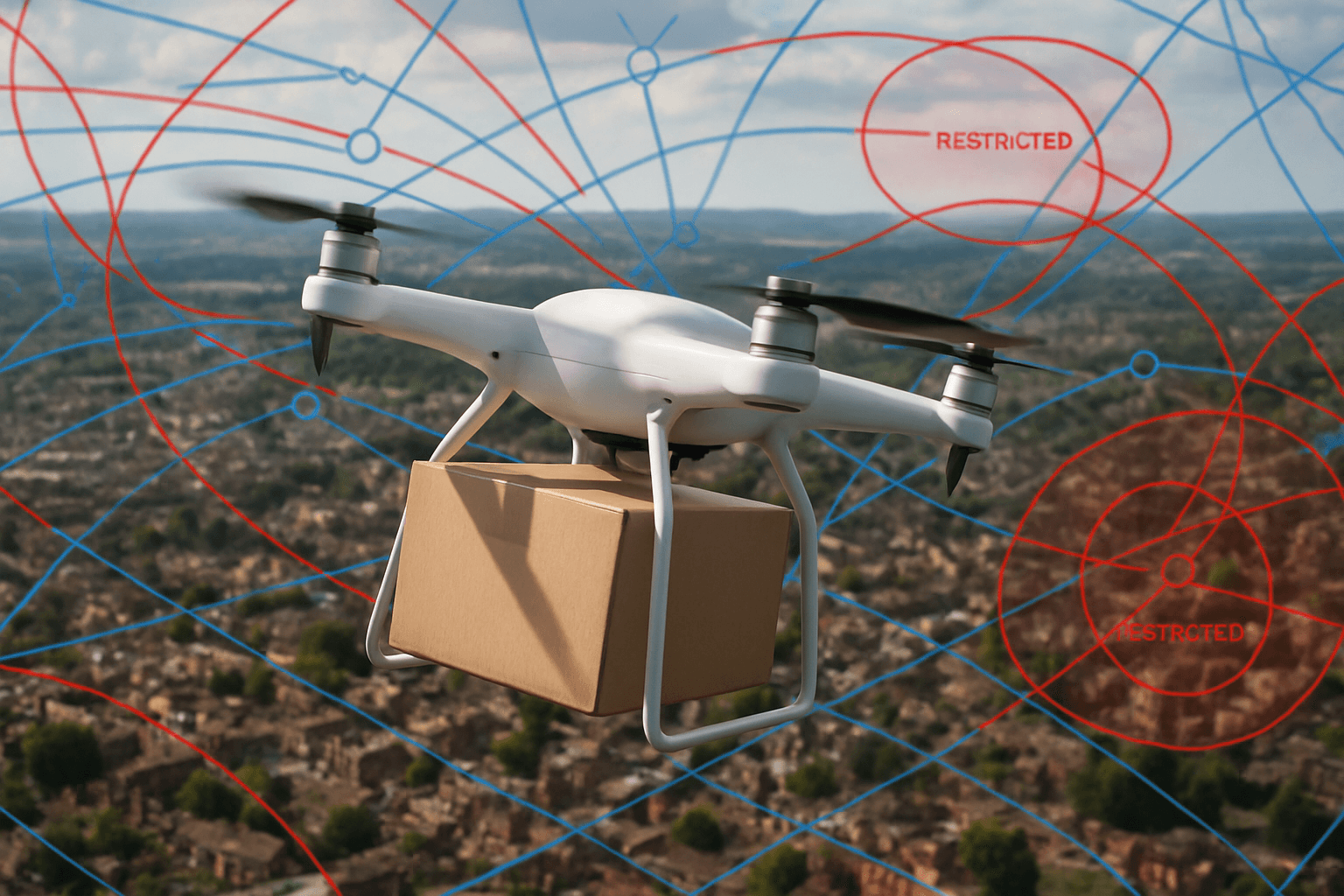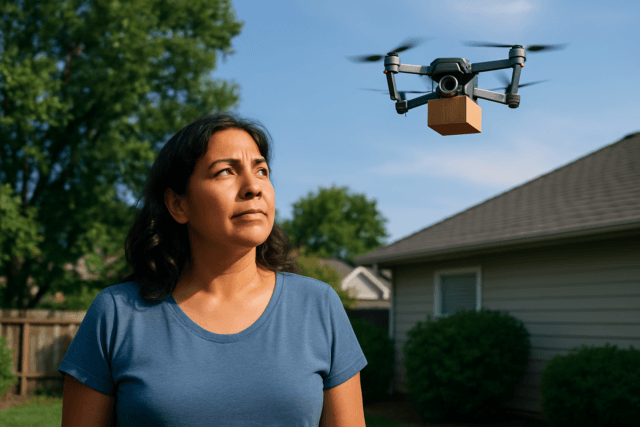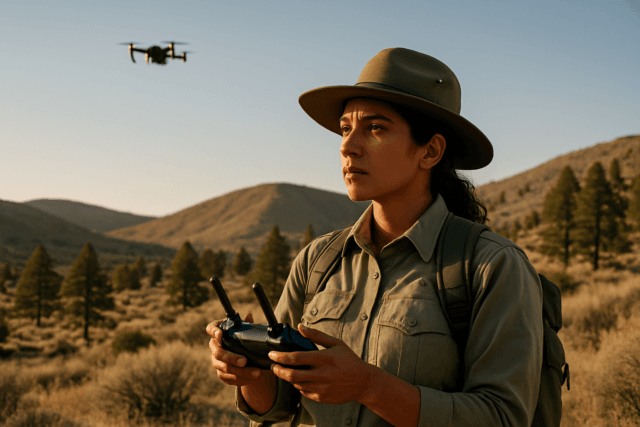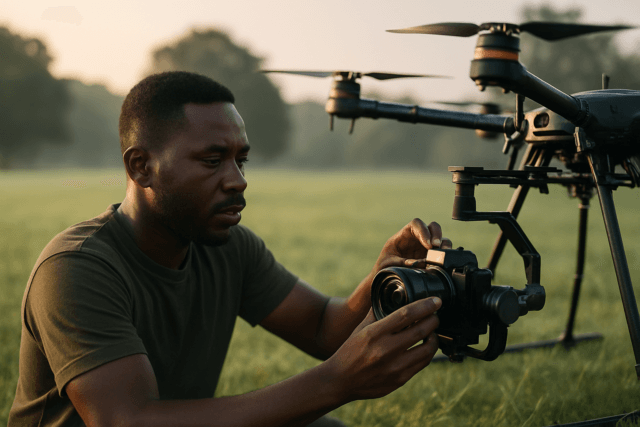The UK’s drone delivery landscape is taking flight, but navigating the regulations can feel like traversing a complex aerial navigation chart. As drones become increasingly integrated into various sectors, from healthcare to e-commerce, understanding the current and upcoming drone delivery regulations is crucial. This article will explore the key aspects of drone delivery regulations in the UK, providing insights into the rules, challenges, and future prospects of this innovative technology.
Current State of UK Drone Delivery
Drone delivery is gaining momentum in the UK, with companies exploring the potential to enhance delivery speed and efficiency. Trials are underway in various locations, highlighting the potential for drones to revolutionize logistics. For example, urgent blood samples are already being transported by electric drones at Guy’s and St Thomas’ NHS Foundation Trust, significantly reducing delivery times.
However, the path to widespread drone delivery faces significant regulatory hurdles. The Civil Aviation Authority (CAA) plays a crucial role in ensuring that drone operations are safe and compliant. Current regulations require drones to remain within the operator’s visual line of sight (VLOS), limiting their operational range.
Key Regulatory Bodies
Civil Aviation Authority (CAA)
The CAA is the UK’s aviation regulator and is responsible for overseeing drone operations. Their responsibilities include:
- Setting safety standards: The CAA establishes rules and guidelines for all aspects of drone flight, including operator training and airspace use.
- Enforcing regulations: The CAA monitors and enforces drone regulations to ensure compliance and maintain safety.
- Approving operations: The CAA approves operational authorizations for drone operations that fall outside the Open category, particularly those with higher risks.
- Adapting to new technologies: The CAA is actively exploring policies for emerging technologies, including beyond visual line of sight (BVLOS) operations.
Market Surveillance Authority (MSA)
The CAA has been appointed as the Market Surveillance Authority (MSA) for drones. From January 1, 2026, drones in the Open Category must meet new product standards under the Class Marking framework to enhance safety and security. The MSA will ensure compliance with these standards among manufacturers, importers, and distributors, intervening when necessary.
UK Drone Regulations: A Detailed Overview
Drone operations in the UK are generally categorized as ‘open,’ ‘specific,’ or ‘certified,’ according to increasing levels of risk and regulation. Many commercial drone operations fall within the ‘open’ or ‘specific’ categories.
Open Category
The Open category covers low-risk drone flights and leisure activities. Key requirements for this category include:
- Drone class marking: Starting January 1, 2026, drones in the Open Category must meet new safety and technical standards and have a class marking.
- Weight restrictions: Drones must weigh less than 25kg.
- Operational limitations: Operations are limited to VLOS.
Specific Category
The Specific category covers more complex drone operations that require authorization from the CAA. Key aspects of this category include:
- Specific Operations Risk Assessment (SORA): The CAA adopts the Specific Operations Risk Assessment (SORA) methodology to evaluate and approve higher-risk drone operations.
- Operational Authorization: Operators must obtain an operational authorization from the CAA before conducting operations in the Specific category.
- Compliance with UK Regulation (EU) 2019/947: SORA 2.5 will become an Accepted Means of Compliance with UK Regulation (EU) 2019/947.
Certified Category
The Certified category covers high-risk drone operations, such as transporting people or dangerous goods. This category requires certification from the CAA and is subject to stringent safety requirements.
Key Changes to UK Drone Regulations in 2025
Several key changes to UK drone regulations are being implemented from 2025, with full enforcement expected by 2026. These changes include:
Introduction of Drone Class Marking
Starting January 1, 2026, the UK will implement drone class marking. Drones in the Open Category will need to meet new safety and technical standards. The CAA, designated as the Market Surveillance Authority (MSA), will monitor compliance among manufacturers, importers, and distributors.
Specific Operations Risk Assessment (SORA)
From April 23, 2025, the CAA will adopt the Specific Operations Risk Assessment (SORA) methodology to evaluate and approve higher-risk drone operations. This new, quantitative framework will replace the previous qualitative assessments, helping standardize safety across the industry.
Beyond Visual Line of Sight (BVLOS) Operations
New policies will make BVLOS operations more accessible. The government is investing £16.5 million in the Civil Aviation Authority to build a regulatory framework for BVLOS drone operations.
Challenges and Opportunities
Regulatory Hurdles
Navigating the regulatory landscape is vital for drone delivery’s future in the UK. Key challenges include airspace management and ensuring public safety. Amazon’s plan to launch its Prime Air drone delivery service in the UK has encountered a regulatory challenge, requiring the tech giant to assign a remote pilot to monitor each self-flying drone.
Public Perception
Public perception is crucial for the widespread adoption of drone technology. Addressing concerns about privacy, safety, and noise pollution is essential to gain public trust.
Technological Advancements
Advancements in AI and robotics are fueling the drone delivery revolution. These technologies enhance navigation, obstacle avoidance, and overall operational efficiency.
NHS Deliveries
Drones could be deployed for NHS deliveries under new UK regulations planned for 2026, which would allow flights beyond visual line of sight (BVLOS) limit. This would unlock long-distance missions across hard-to-reach areas, allowing drones to be used for NHS-related missions in remote areas.
The Future of Drone Delivery in the UK
The future of drone delivery in the UK looks promising, with ongoing developments and investments in the sector. The government is investing £16.5 million in the Civil Aviation Authority to build a regulatory framework for BVLOS drone operations and a further £5 million to the Future of Flight industry group to support business, including the development of commercial drone solutions.
Streamlined Regulations
Government plans to simplify regulations could allow drones to fly long distances without their operators seeing them. This would make it quicker and easier for industry to prove the safety of the technologies and deliver the necessary digital infrastructure to ensure their safety.
Expansion of Drone Delivery Services
As regulations evolve and technology advances, drone delivery services are expected to expand across various sectors. This includes e-commerce, healthcare, infrastructure inspection, and emergency services.
Integration with Existing Logistics
Drone delivery is likely to become integrated with existing logistics networks, providing faster and more efficient last-mile delivery solutions. This could involve drone hubs, charging stations, and maintenance facilities.
Practical Advice for Drone Operators
For drone operators in the UK, compliance with regulations is paramount. Here are some practical tips:
- Stay informed: Keep up-to-date with the latest drone regulations and guidelines from the CAA.
- Obtain necessary permissions: Ensure you have the necessary flight permissions and operational authorizations for your drone operations.
- Conduct risk assessments: Perform thorough risk assessments, such as SORA, to identify and mitigate potential hazards.
- Prioritize safety: Adhere to strict safety measures and guidelines to protect people and property.
- Get necessary training: Make sure all drone operators are properly trained and licensed.
- Use compliance tools: Use tools like SORA-Mate, an automated risk assessment platform designed to help UK drone operators comply with the new SORA 2.5 regulations.
Conclusion
The UK’s drone delivery regulations are evolving to keep pace with technological advancements and ensure safety and security. While challenges remain, the potential benefits of drone delivery are significant, with applications across various sectors. By staying informed, complying with regulations, and prioritizing safety, drone operators can contribute to the responsible and sustainable growth of the drone industry in the UK.





